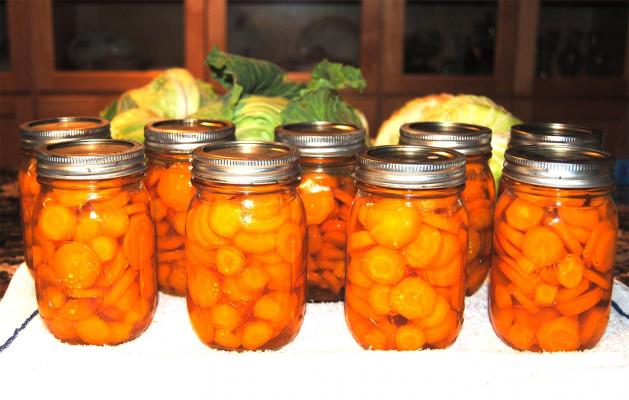Preserving Winter Veggies
The best way to preserve winter vegetables is generally different than preserving summer vegetables. And, it seems that winter vegetables lose more flavor and quality than summer vegetables when preserved. One thing that uses the same process is carrots. They can be canned in a pressure canner for 15 to 20 minutes for pints.
Harvest your carrots and wash them. Peel them and wash them again. Then you can slice them and can them. You don’t need to add anything to the carrots but water. The only reason for canning carrots is that you have way too many. Carrots can last in the refrigerator for up to one or two months. A fresh, homegrown carrot is sweet and crisp – much better than store bought. When you can them, they lose flavor and become soft. Canned carrots are good in soups and stews, but they lack that satisfying crunch and burst of flavor that you get from the carrots you pulled from your garden the same morning. Carrots can be grown in the fall and spring gardens. You have until mid-April to plant.
Broccoli and cauliflower can be frozen. After harvesting, they should be washed and cut into small pieces. Check carefully for worms. Once you have double checked for extra protein, blanch them for about four minutes then lay them out on a cookie sheet covered with wax paper.
After a day in the freezer, you can put them in freezer bags to store for a season, or vacuum seal them to last for two or three years. Our broccoli and cauliflower did well this year and we have a third of the big freezer filled with vacuum sealed brassicas. That means that we have ordered an upright freezer.
We prefer broccoli and cauliflower raw, with ranch dressing. I’m pretty sure that was the plan when broccoli and cauliflower were invented. As with carrots, brassicas lose some flavor (not as much as carrots) and they are definitely limber when they come out of the freezer. The nice thing about vacuum sealing is that you can throw a bag in the microwave and it comes out as “steamed” vegetables. They are also good in a casserole after freezing.
Extra collards can be blanched and frozen in freezer bags. Since we don’t eat raw collards, we can use the frozen collards the same way we use them fresh. They lose a tiny bit of quality, but it’s nice to have some in the summer to break-up the tomato-okra-squash cycle.
Cabbage is a tough one. Cabbage doesn’t can or freeze well. But you can make sauerkraut. Sauerkraut is fermented cabbage. Making it requires a large crock and a lot of mysterious alchemy. It’s also best to complete the fermentation in your garage, barn, she shed, tool shed, garden shed, or at a neighbor’s house. Rotten cabbage stinks. It will stink up your entire house and half of the neighborhood. You have to open the crock every day to skim the scum off of it which lets the odor escape. The finished product is great, by itself or on a hot dog. Just make it in a well ventilate area that is not inside the house!
Overall, I would say to eat as much of your fall/winter vegetables as you can stand. If you have a good surplus, can, freeze, or ferment it. It’s nice to have some winter veggies in the middle of the summer, but keep your food supply organized so you don’t discover something vintage at the bottom of the freezer!
Keep on growing!
Geary Hare of Edna is an avid gardener. For questions, contact Geary at ghare@ msn.com.

